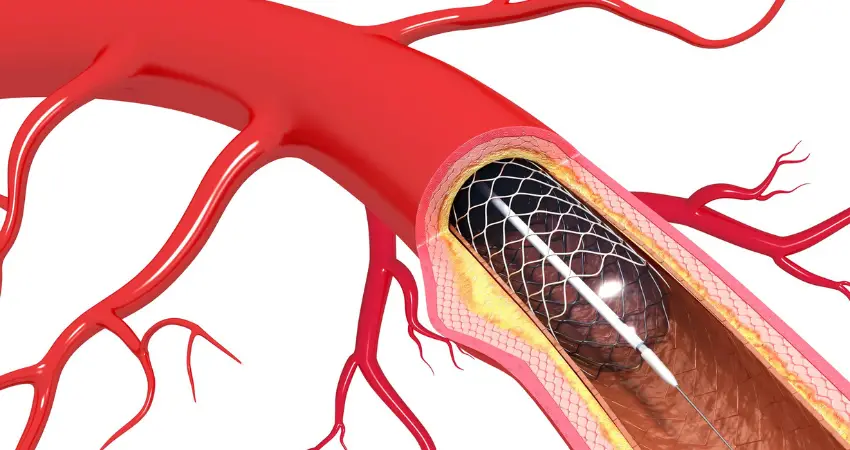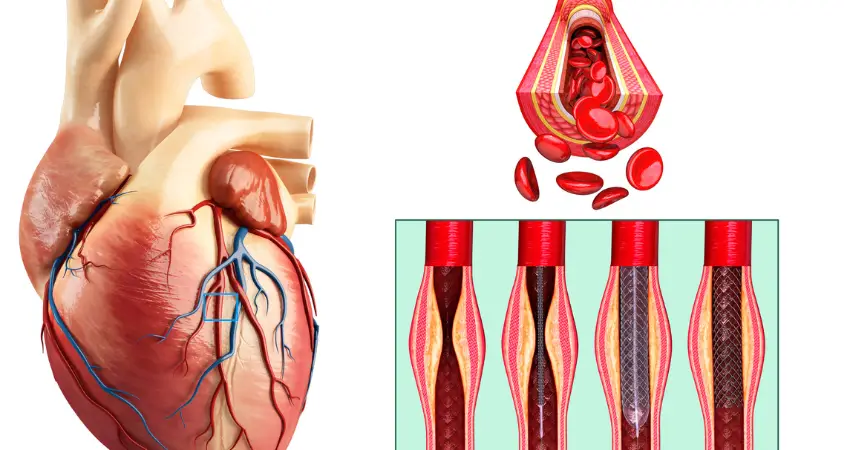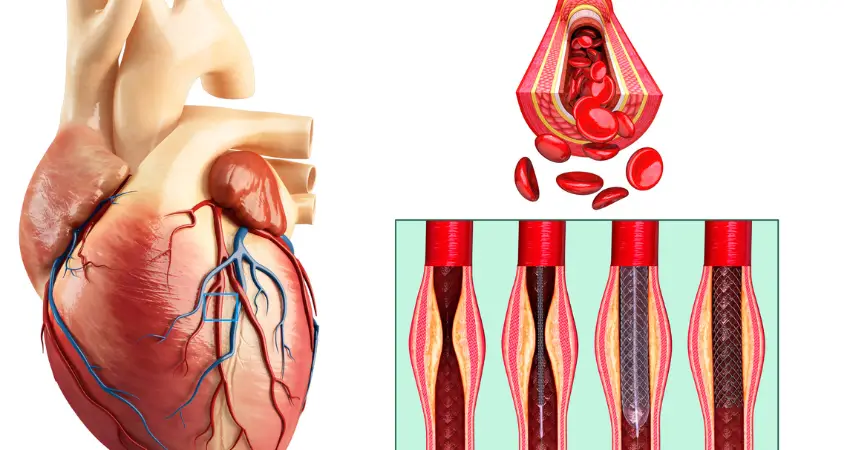Everything You Need to Know About Heart Stents in South Africa: A Comprehensive Guide
Welcome to our comprehensive guide on heart stents in South Africa, where we will provide you with everything you need to know about this life-saving medical procedure. Heart disease remains one of the leading causes of death globally, and stents have emerged as a revolutionary solution in the field of cardiology.
In this guide, we will delve into the ins and outs of heart stents, exploring their purpose, benefits, and the procedure itself. From understanding the different types of stents available to the risks and potential complications, we aim to equip you with the knowledge necessary to make informed decisions about your cardiovascular health.
Whether you are a patient seeking more information or simply curious about this important medical intervention, our guide will serve as a reliable resource to demystify heart stents in South Africa. Join us as we unravel the intricacies of this life-saving technique and empower you to take control of your cardiac well-being.

What Are Heart Stents, and How Do They Work?
Heart stents are small, mesh-like tubes made of metal or polymer that are used to treat blocked or narrowed arteries in the heart. They work by providing support and maintaining the patency of the arteries, allowing for improved blood flow to the heart muscle. When an artery becomes narrowed or blocked due to the buildup of plaque, a stent can be inserted to open up the artery and restore normal blood flow.
The stent acts as a scaffold, keeping the artery open and preventing it from collapsing or becoming blocked again. This procedure, known as coronary angioplasty or percutaneous coronary intervention (PCI), is minimally invasive and is often performed under local anesthesia.
Heart stents can be either bare metal stents (BMS) or drug-eluting stents (DES). BMS are made of metal and do not contain any medication, while DES are coated with medication that helps prevent the artery from re-narrowing. The choice of stent depends on various factors, such as the patient’s medical history, the location and severity of the blockage, and the presence of any other underlying health conditions. The cardiologist will determine the most suitable type of stent for each individual case.
In addition to their mechanical function, heart stents also promote the healing process within the artery. Over time, the body’s natural response to the stent leads to the formation of a thin layer of cells that covers the stent, reducing the risk of re-narrowing and promoting long-term stability.
Common Types of Heart Stents
There are several types of heart stents available in South Africa, each with its own unique characteristics. The two main categories are bare metal stents (BMS) and drug-eluting stents (DES).
Bare metal stents, as the name suggests, are made of metal, usually stainless steel or cobalt-chromium alloy. They provide physical support to the artery, keeping it open and allowing blood to flow freely.
While BMS are effective in preventing immediate re-narrowing of the artery, they have a higher risk of long-term re-narrowing compared to drug-eluting stents.
On the other hand, drug-eluting stents are coated with a medication that helps prevent the re-narrowing of the artery. This medication is slowly released into the surrounding tissue, reducing the risk of restenosis. DES have significantly lower rates of re-narrowing compared to BMS, making them the preferred choice in most cases.
Another type of stent that is sometimes used is the bioresorbable stent. These stents are made of a material that gradually dissolves over time, leaving the artery in its natural state. While bioresorbable stents offer certain advantages, such as the potential for complete restoration of normal artery function, they are not yet widely available in South Africa and are mainly used in select cases.
The choice of stent depends on various factors, including the patient’s medical history, the location and severity of the blockage, and the doctor’s preference. It is important to discuss the options with your cardiologist to determine the most suitable stent for your individual needs.

When are Heart Stents Used?
Heart stents are used to treat coronary artery disease (CAD), a condition characterized by the narrowing or blockage of the arteries that supply blood to the heart muscle.
CAD occurs when fatty deposits, known as plaque, build up on the inner walls of the arteries, restricting blood flow and oxygen delivery to the heart.
Heart stents are typically recommended in cases where the blockage is causing symptoms, such as chest pain (angina) or shortness of breath, or when there is a significant risk of a heart attack.
Stents can also be used as a preventive measure in individuals with a high risk of developing CAD, even if they are not currently experiencing symptoms.
It is important to note that heart stents are not suitable for everyone with CAD. The decision to use a stent is made based on a thorough evaluation of the patient’s medical history, symptoms, and diagnostic tests. Other treatment options, such as medication or bypass surgery, may be considered depending on the individual case.
Benefits and Risks of Heart Stents
Heart stents offer several benefits for patients with coronary artery disease. They can relieve symptoms, improve quality of life, and reduce the risk of heart attack. By opening up the blocked or narrowed arteries, stents restore normal blood flow to the heart muscle, allowing it to receive the oxygen and nutrients it needs to function properly.
In addition to the immediate benefits, heart stents also have long-term advantages. Studies have shown that stenting can reduce the need for repeat procedures, such as angioplasty or bypass surgery, in the future. It can also improve survival rates in certain high-risk patient populations.
However, like any medical procedure, heart stenting carries certain risks. The most common complications include bleeding, infection, and damage to the blood vessels or heart. In rare cases, stents can also cause blood clots to form inside the artery, leading to a heart attack or stroke. It is important to discuss the potential risks and benefits with your cardiologist before undergoing the procedure.

The Process of Getting a Heart Stent in South Africa
Getting a heart stent in South Africa typically involves several steps, starting with a consultation with a cardiologist. During the initial evaluation, the cardiologist will review your medical history, conduct a physical examination, and order diagnostic tests, such as an electrocardiogram (ECG), stress test, or coronary angiography, to assess the extent and severity of the blockage.
Once the need for a stent is confirmed, the procedure can be scheduled. Most heart stent procedures are performed in a cardiac catheterization laboratory, also known as a cath lab. The patient is usually given a sedative to help them relax, and a local anesthetic is used to numb the area where the catheter will be inserted.
The stent is inserted into the blocked or narrowed artery using a thin, flexible tube called a catheter. The catheter is inserted through a small incision in the groin or wrist and guided to the heart under X-ray imaging. Once the stent is in place, it is expanded using a balloon, which pushes the plaque against the artery wall, allowing for improved blood flow. The balloon is then deflated and removed, leaving the stent in place to keep the artery open.
The entire procedure usually takes about an hour, but the preparation and recovery time may vary. Most patients are able to go home on the same day or the following day, depending on their condition and the hospital’s protocol. Cardiorhythm has an excellent page that shows how the procedure is done.
Choosing the Right Hospital and Doctor For Heart Stent Surgery
Choosing the right hospital and doctor for your heart stent surgery is crucial to ensure a successful outcome. Here are some factors to consider:
1. Experience and expertise: Look for a hospital and doctor with a proven track record in performing heart stent procedures. Check their credentials, years of experience, and the number of procedures they have performed.
2. Reputation and reviews: Research the hospital’s reputation and read patient reviews to get an idea of the quality of care they provide. Look for hospitals with high patient satisfaction rates and positive feedback.
3. Facilities and technology: Ensure that the hospital has state-of-the-art facilities and the latest equipment for cardiac interventions. Advanced technology can improve the accuracy and safety of the procedure.
4. Support services: Consider the availability of support services, such as a dedicated cardiac care unit, rehabilitation programs, and access to specialized medical professionals, including dietitians and physiotherapists.
5. Location and accessibility: Choose a hospital that is easily accessible and located within a reasonable distance from your home. This will make it more convenient for follow-up visits and emergencies.
Discuss your options with your cardiologist, and consider seeking a second opinion if necessary. It is important to feel comfortable and confident in the hospital and doctor you choose, as they will play a significant role in your overall treatment and recovery. News24 did a shocking news segment about the dangers of a new type of stent, which has been used for the past 12 to 18 months across the globe including in South Africa, is now being revealed bit by bit in medical journals.

Recovery and Aftercare for Heart Stent Patients
After the heart stent procedure, the patient will be monitored closely in the hospital for a few hours to ensure there are no immediate complications. Once stable, most patients are discharged and can return home to continue their recovery.
During the initial days or weeks after the procedure, it is important to follow the doctor’s instructions and take prescribed medications as directed. These may include blood thinners, antiplatelet drugs, and medications to control blood pressure and cholesterol levels. It is crucial to take these medications regularly to prevent blood clots and further plaque buildup.
In terms of physical activity, most patients are advised to gradually resume their normal daily activities. Light exercises, such as walking, are usually recommended to improve cardiovascular health and aid in recovery. However, strenuous activities and heavy lifting should be avoided for a certain period of time, as advised by the doctor.
A healthy lifestyle is essential for long-term heart health. This includes adopting a balanced diet rich in fruits, vegetables, whole grains, and lean proteins, and minimizing the intake of saturated fats, processed foods, and sugary drinks. Quitting smoking and managing stress are also important factors in maintaining a healthy heart.
Regular follow-up visits with the doctor are necessary to monitor the progress and make any necessary adjustments to the treatment plan. These appointments may include physical examinations, blood tests, and imaging tests to assess the condition of the stent and the overall health of the heart.
Lifestyle Changes and Precautions After Getting a Heart Stent
After getting a heart stent, certain lifestyle changes and precautions can help maintain the health of the stent and prevent further complications. Here are some important considerations:
1. Medication compliance: It is vital to continue taking prescribed medications as directed by the doctor. This includes blood thinners, antiplatelet drugs, and medications to control blood pressure and cholesterol levels. Abruptly stopping these medications can increase the risk of blood clots and re-narrowing of the artery.
2. Healthy eating habits: Adopting a heart-healthy diet can significantly improve cardiovascular health. Focus on consuming a variety of fruits, vegetables, whole grains, and lean proteins. Limit the intake of saturated fats, trans fats, cholesterol, sodium, and added sugars.
3. Regular exercise: Engaging in regular physical activity can help strengthen the heart, improve blood flow, and reduce the risk of future heart problems. Consult with your doctor to determine the appropriate level of exercise and any restrictions based on your specific condition.
4. Smoking cessation: Quitting smoking is essential for heart health. Smoking damages the blood vessels and increases the risk of blood clots, heart attacks, and strokes. Seek support from healthcare professionals or cessation programs to overcome nicotine addiction.
5. Stress management: Chronic stress can negatively impact heart health. Explore stress-reducing techniques such as meditation, deep breathing exercises, yoga, or engaging in hobbies and activities that bring joy and relaxation.
6. Regular check-ups: Schedule regular follow-up visits with your cardiologist to monitor the health of the stent, assess your overall cardiovascular health, and make any necessary adjustments to your treatment plan.
By adopting these lifestyle changes and precautions, you can significantly reduce the risk of future heart problems and ensure the longevity and effectiveness of the heart stent.
FAQ
1. Are heart stents permanent?
Heart stents are designed to be permanent implants. Over time, the stent becomes covered with a thin layer of cells, reducing the risk of re-narrowing. However, in some cases, complications may arise that require the removal or replacement of the stent.
2. Can heart stents be used in all cases of coronary artery disease?
Heart stents are not suitable for all cases of coronary artery disease. The decision to use a stent depends on various factors, such as the location and severity of the blockage, the patient’s medical history, and the presence of any other underlying health conditions. Your cardiologist will determine the most appropriate treatment option for your individual case.
3. How long does the heart stent procedure take?
The heart stent procedure usually takes about an hour, but the preparation and recovery time may vary. It is important to discuss the details with your cardiologist to have a clear understanding of the timeline.
4. Are heart stents covered by medical insurance in South Africa?
Heart stent procedures are generally covered by medical insurance in South Africa, but it is important to check with your insurance provider to confirm the coverage and any associated costs.
5. Can heart stents be used to treat other conditions besides coronary artery disease?
Heart stents are primarily used to treat coronary artery disease, but they can also be used in other cases, such as in the treatment of blocked or narrowed arteries in other parts of the body, including the legs or kidneys. The suitability of a stent for a specific condition will depend on various factors and should be discussed with a healthcare professional.
Conclusion
Heart stents have revolutionized the treatment of coronary artery disease, providing a life-saving solution for patients with blocked or narrowed arteries. In this comprehensive guide, we have explored the purpose, benefits, and risks of heart stents in South Africa.
We have discussed the different types of stents available, the process of getting a stent, and the importance of choosing the right hospital and doctor for the procedure. We have also highlighted the recovery process, lifestyle changes, and precautions necessary for long-term heart health.
By empowering yourself with knowledge and making informed decisions, you can take control of your cardiovascular well-being and lead a healthier, heart-conscious life. Remember, your heart matters.
My name is Phyllis Robinson MSN, RN. I have been a Registered Nurse for 27 years in the Cardiac Intensive Care Unit. I am passionate about cardiac care and heart disease. I also want this blog to be an educational tool that people can refer to for traditional and alternative treatment. I will blog on heart disorders such as high blood pressure, congestive heart failure, cardiomyopathy, and high cholesterol.
I received my Nursing degree from Baltimore Community College.
I went on to receive my Masters in Nursing from Walden University
I have worked for almost 30 years in Critical Care with a focus on heart health. I am an advocate of preventive healthcare.

